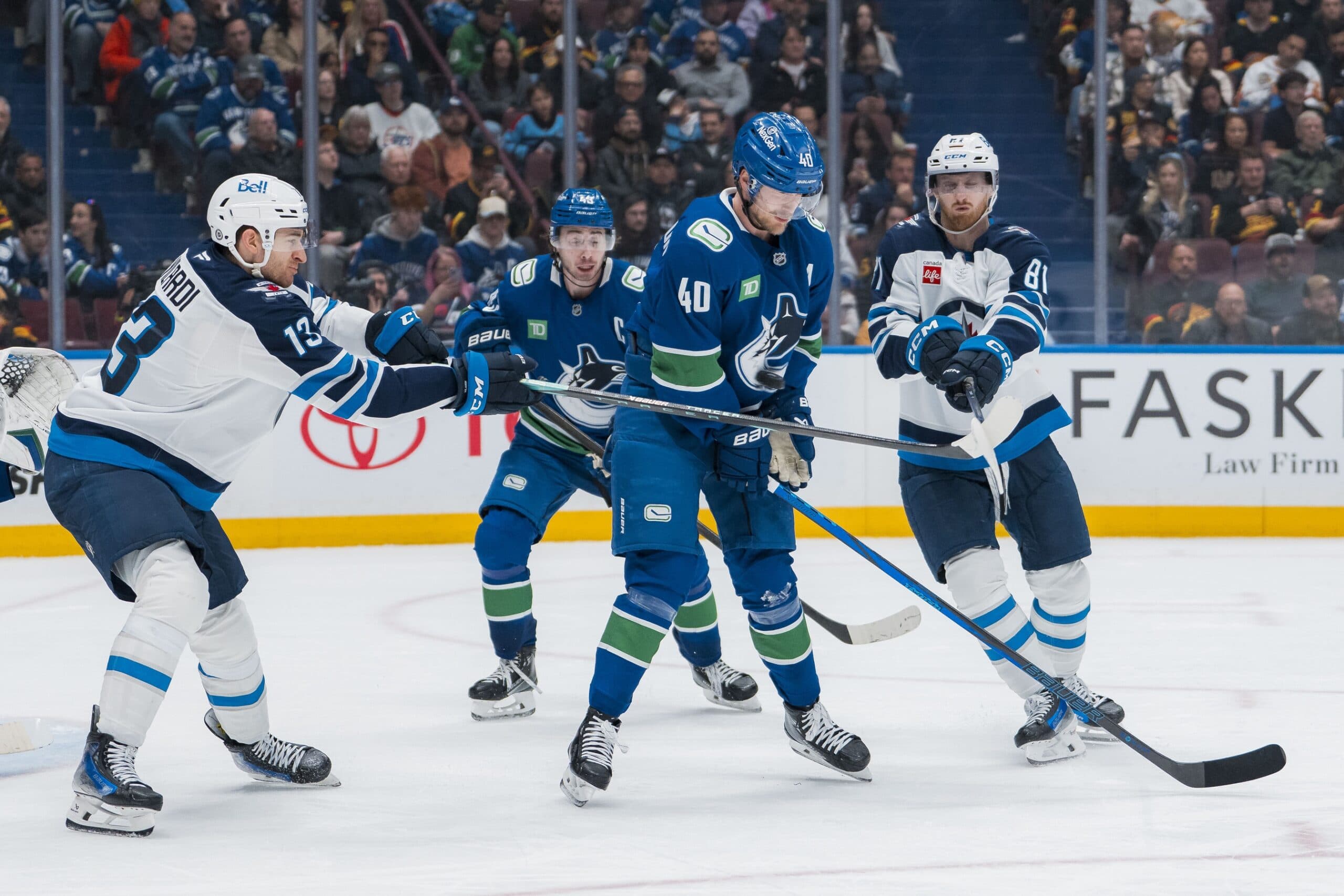The Vancouver Canucks don’t lead the league in many categories for the 2024/25 season. But they do lead the league in overtime losses (13) – not that anyone is ever going to brag about that.
Is there any meaning to be derived from such a stat?
Some might look at it and determine that the Canucks were closer to success this year than their overall record might indicate. Overtime losses are always, after all, one-goal games by their very nature. A different bounce, or a call that went the other way, and each of these games could have easily ended in the Canucks’ favour. And this has been a season in which the bounces and the calls have not typically gone the Canucks’ way.
Were the Canucks able to convert even six of those 13 OT losses into wins, they’d be in a playoff spot right now. That’s six goals for instead of six goals against and a dramatically different result.
But winning overtime games is easier said than done.
The downside of this is that, in the end, a major portion of the Canucks’ current 81 points have been derived from what are ultimately losses – 13 of those 81 points, or some 16%. That’s right; almost a fifth of all Vancouver points in 2024/25 came from games where the other team skated away as victors. And that sure doesn’t sound like a team that was ‘close’ to success.
If we measure by regulation-time wins, the first official tiebreaker for the NHL standings, we find the Canucks with just 26. That’s significantly far behind the Minnesota Wild (33) and the St. Louis Blues (30), the two teams Vancouver is trying to catch in the actual standings. That’s why, if the Canucks were to somehow miraculously tie either team in the points-chase, they’d still fall short of the playoffs.
It also puts the Canucks in some dicey company. Their amount of regulation wins are dangerously comparable to some of the Western Conference’s worst teams. We’re talking the Utah Hockey Club (25), Seattle Kraken (25), Anaheim Ducks (23), and Nashville Predators (23). With Utah excepted (the team with the second-most overtime losses in the league), these are teams that are universally accepted to be having poor seasons. And yet, they’ve won games outright about as often as the Canucks.
This read of the stats might, in turn, lead one to believe that the Canucks are actually further off from playoff contention than previously assumed.
But the real read of these stats is not that the Canucks are closer or further away from the playoffs, but more so that the margins they’re dealing with are incredibly narrow. A few key things going better, and the Canucks would have a much better result for 2024/25, and probably be pretty comfortably in the playoffs. A few key things going worse, and they might just be in the basement.
It’s not news to anyone that things will need to go better for the Canucks in 2025/26 if they want a real shot at the 2026 postseason. But perhaps relatively small-scale improvements, or some individual bouncebacks, could make enough of a positive difference to count.
A good example of this is the forward, Elias Pettersson. Most would agree that his bouncing back next season is the biggest potential difference-maker available. And the razor-thin numbers certainly support that.
To wit: the Canucks are currently at a -16 goal-differential. Which ain’t great, but it is the ‘best’ goal differential of any team not currently in a playoff position in the West, and it is, in fact, better than at least one playoff team in the East (Montreal with -26).
Then, let’s look at Pettersson specifically. This season, he’s been on the ice for 34 goals for and 36 goals against, a differential of -1.
Last season, however, Pettersson had a differential of +20. And the season before that, he was at +12. Pettersson turning around his own on-ice results, in other words, should have essentially wiped out the minus side of the Canucks’ current goal-differential. Combine that with their amount of one-goal losses, and you’re potentially looking at a much better record.
Again, we’re getting into ‘easier said than done’ territory here. And nothing happens in a vacuum.
An obvious counterpoint to this optimism would be that even if Pettersson bounces back for a full season, the Canucks still haven’t replaced JT Miller. But then we’d have to point out that, in the wake of Miller’s departure, the blueline has undergone an improvement, and that the team’s goal-differential has actually been better off post-Miller (-4) than it was with Miller (-12).
Thus, it’s not that hard to imagine a scenario in 2025/26 in which a few more things go the Canucks’ way, like a better Pettersson and healthier goaltending and such, and these thin margins get pointed in the other direction and the Canucks soar up the standings.
But razor-thin margins are like razor-sharp double-edged swords. For the pessimists in the crowd, it’s also pretty easy to imagine the margins swinging in the other direction, and leaving the Canucks to languish in the league cellar.
At best, these narrow margins are at least an opportunity to turn things around without the need for drastic, sweeping changes – and that’s all that can be said at the present moment.
Sponsored by bet365


